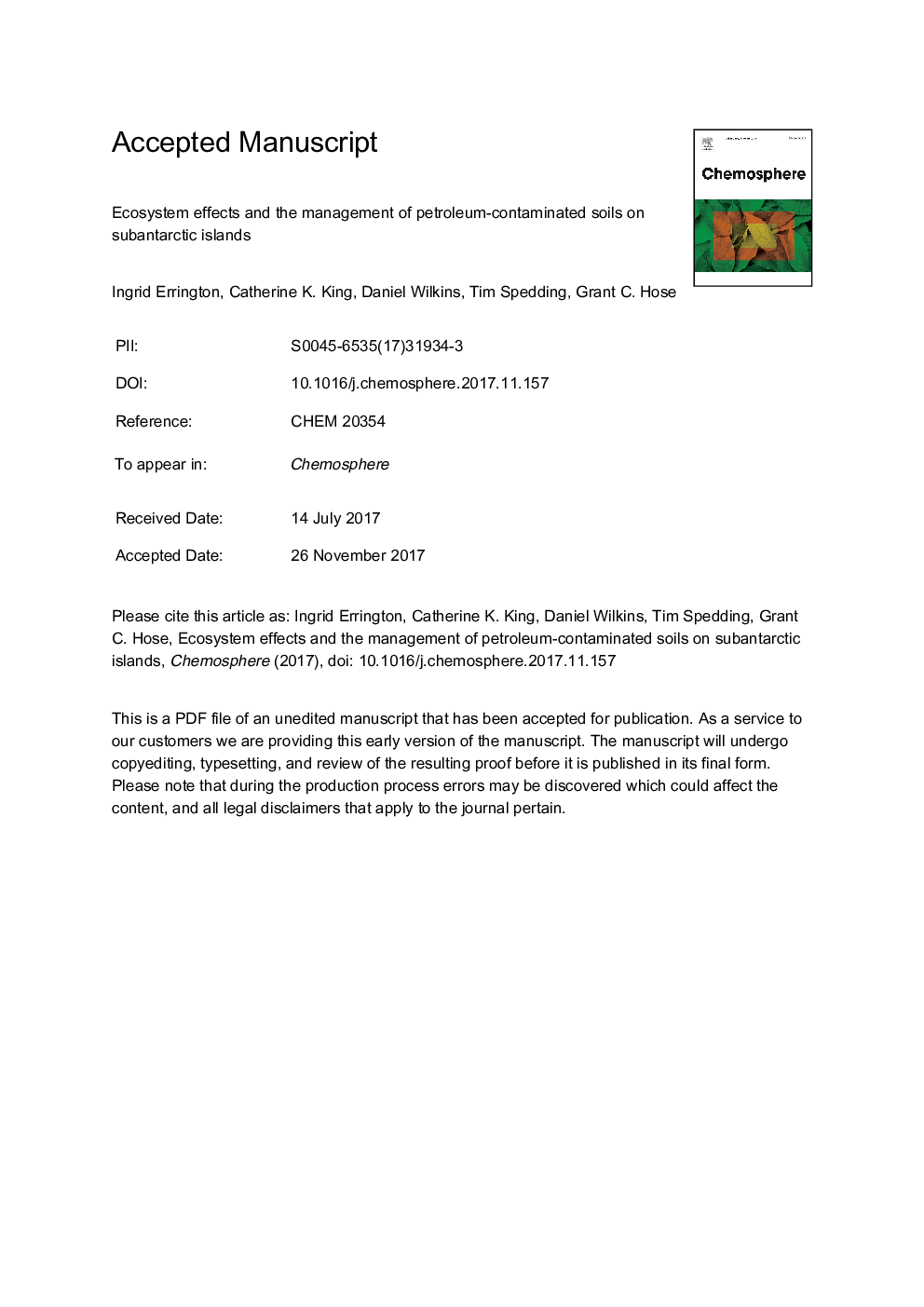| کد مقاله | کد نشریه | سال انتشار | مقاله انگلیسی | نسخه تمام متن |
|---|---|---|---|---|
| 8852429 | 1618777 | 2018 | 31 صفحه PDF | دانلود رایگان |
عنوان انگلیسی مقاله ISI
Ecosystem effects and the management of petroleum-contaminated soils on subantarctic islands
ترجمه فارسی عنوان
اثرات اکوسیستم و مدیریت خاک های آلوده به نفت در جزایر سابانتارکتیک
دانلود مقاله + سفارش ترجمه
دانلود مقاله ISI انگلیسی
رایگان برای ایرانیان
کلمات کلیدی
موضوعات مرتبط
علوم زیستی و بیوفناوری
علوم محیط زیست
شیمی زیست محیطی
چکیده انگلیسی
Human activity in the Polar Regions has resulted in petroleum contamination of soils. In this context, subantarctic islands are a unique management challenge for climatic, biological and logistical reasons. In this review we identify the main abiotic factors affecting petroleum-contaminated soils in the subantarctic environment, the primary effects of such contamination on biota, and lessons learned with regards to remediation techniques in this region. The sensitivity of biota to contamination depends on organism life stage, on soil properties, and on the degree of contaminant weathering. Initial studies using species endemic to subantarctic islands suggest that for fresh diesel fuel, sensitivities may range between 103 and 20 000Â mg total petroleum hydrocarbons (TPH) kg â1 soil. Diesel that has undergone a short period of weathering is generally more toxic, with sensitivities ranging between 52 and 13 000Â mg TPH kgâ1 soil for an earthworm and a grass respectively (based on EC20 and IC50 values). A sufficient body of data from which to develop remediation targets for existing spills in the region does not yet exist for the region, but there has been a recent increase in research attention to address this data gap. A range of remediation methods have also now been trialled, and techniques such as in-ground aeration and nutrient addition have achieved some success. Passive management techniques such as permeable reactive barriers and phytoremediation are in preliminary stages of investigation for the region and show promise, not least because they cause less collateral disturbance than other methods.
ناشر
Database: Elsevier - ScienceDirect (ساینس دایرکت)
Journal: Chemosphere - Volume 194, March 2018, Pages 200-210
Journal: Chemosphere - Volume 194, March 2018, Pages 200-210
نویسندگان
Ingrid Errington, Catherine K. King, Daniel Wilkins, Tim Spedding, Grant C. Hose,
